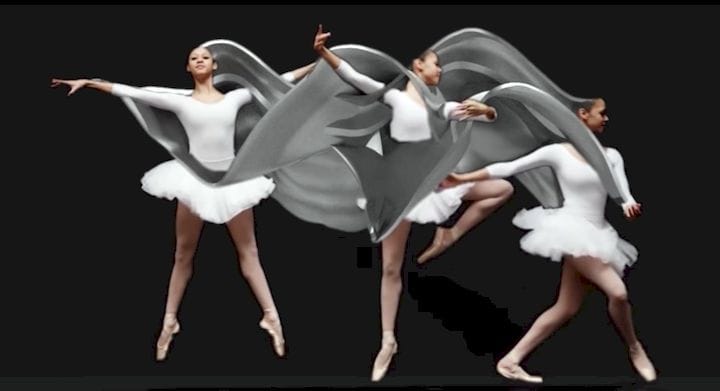![Capturing - and 3D printing - motion! [Source: MIT]](https://fabbaloo.com/wp-content/uploads/2020/05/image-asset_img_5eb0a67e9e873.jpg)
Researchers at MIT have come up with an ingenious new approach for motion studies using 3D printing.
The idea is to automatically capture the motion of a subject in a video, and transform that motion into a kind of sweeping 3D model.
Their technology allows capture from almost any video showing a person performing a motion, as it automatically detects tracking points on the person’s image in each frame of the video. It’s like those old-time stroboscopic pictures, except this is three dimensional, and physical.
![Capturing the motion of a jogger [Source: MIT]](https://fabbaloo.com/wp-content/uploads/2020/05/image-asset_img_5eb0a67f17948.jpg)
Normally, specialized tracking spots are attached to the subject, making it easier for less sophisticated tracking systems to monitor progress of the motion. But the new MIT approach doesn’t require any such devices, and apparently any motion video taken from a stationary position can be used.
![Tracking points are usually manually installed, but MIT’s approach does this automatically [Source: MIT]](https://fabbaloo.com/wp-content/uploads/2020/05/image-asset_img_5eb0a67f68e3e.jpg)
The work was undertaken by MIT’s Computer Science and Artificial Intelligence Lab (CSAIL), and their objective was not to create a new form of artwork (although they seem to have done so, and even call them “motion sculptures”), but rather to allow a new form of motion study.
Their proposal is that a 3D printed version of the motion capture could be used to analyze the motions in different ways. This seems analogous to the difference between evaluating a part design on a 2D screen showing a 3D view, and holding a prototype of the part in your hand. The printed version can be easily examined from all directions.
![A 3D printed motion sculpture [Source: MIT]](https://fabbaloo.com/wp-content/uploads/2020/05/image-asset_img_5eb0a67fb8b24.jpg)
But how can you do so? One approach suggested by the researchers would be to 3D print a motion sculpture of a subject and then compare it with a motion sculpture of the same motion being performed by an expert. The subtle differences in the sculpture could indicate areas for improvement.
MIT says:
“After stitching these skeletons together, the system generates a motion sculpture that can be 3-D-printed, showing the smooth, continuous path of movement traced out by the subject. Users can customize their figures to focus on different body parts, assign different materials to distinguish among parts, and even customize lighting.
In user studies, the researchers found that over 75 percent of subjects felt that MoSculp provided a more detailed visualization for studying motion than the standard photography techniques.”
![Another 3D printed motion sculpture by MIT researchers [Source: MIT]](https://fabbaloo.com/wp-content/uploads/2020/05/image-asset_img_5eb0a6800ac38.jpg)
One can imagine a number of different areas for using this technology, including not only sports and dance, but any repetitive motion scenario where humans find themselves involved.
While this technology has been developed for human analysis, I’m wondering if it could be adapted for other types of subjects. For example, could traffic flows be analyzed using this approach? Bird migration patterns? Robotic assembly operations? There could be many uses.
However, this technology is only research at this point and we’ll have to wait until it is commercialized by someone.
Via MIT











A research thesis details the incredibly complex world of volumetric 3D printing. We review the highlights.